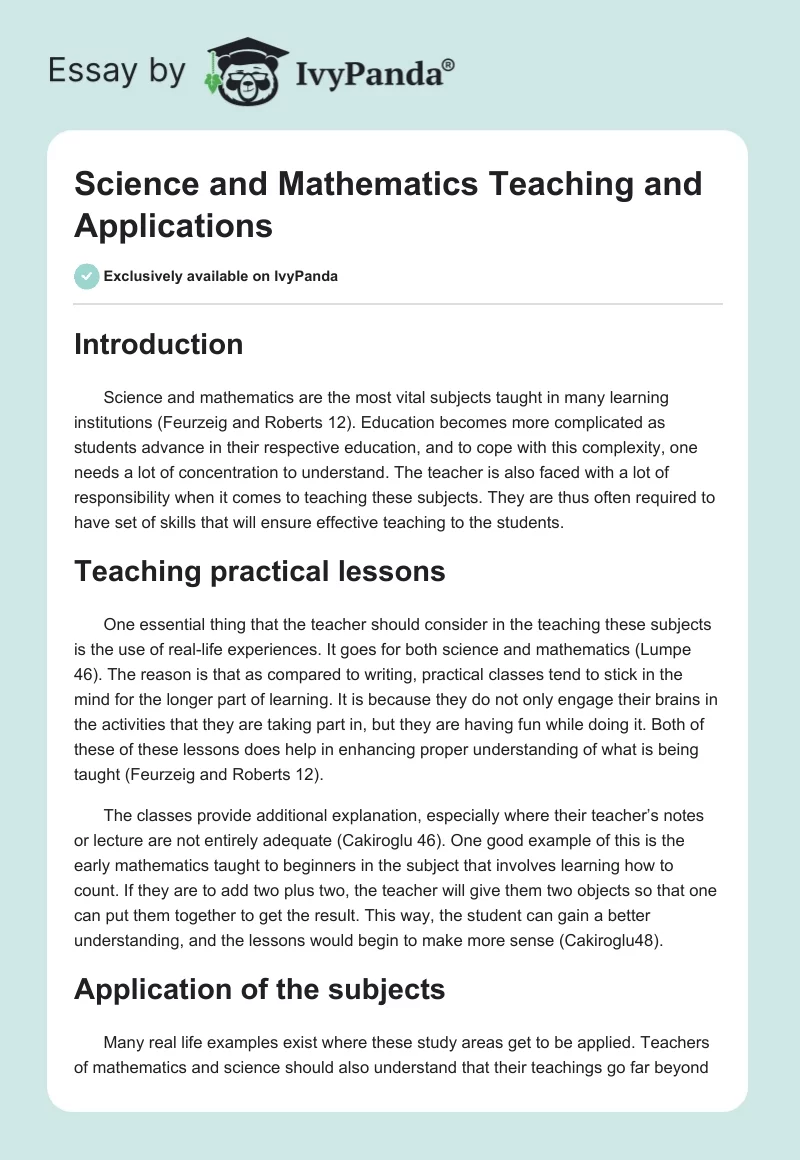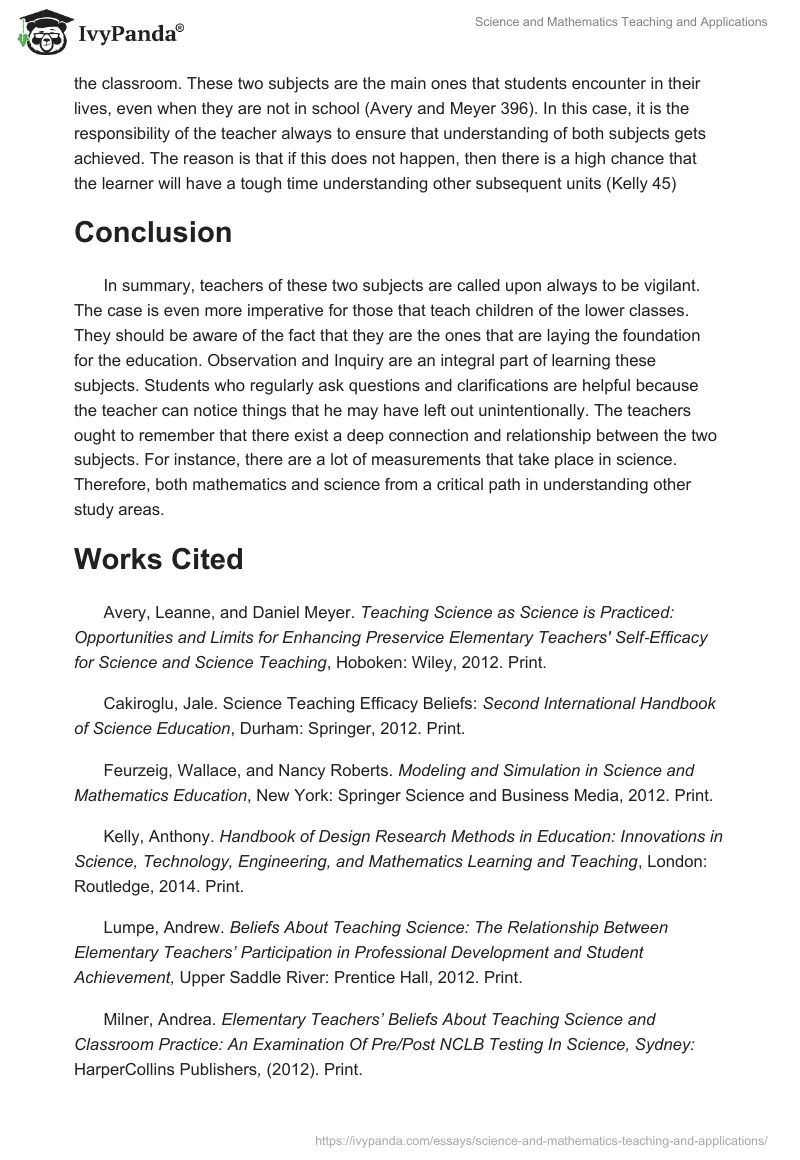Introduction
Science and mathematics are the most vital subjects taught in many learning institutions (Feurzeig and Roberts 12). Education becomes more complicated as students advance in their respective education, and to cope with this complexity, one needs a lot of concentration to understand. The teacher is also faced with a lot of responsibility when it comes to teaching these subjects. They are thus often required to have set of skills that will ensure effective teaching to the students.
Teaching practical lessons
One essential thing that the teacher should consider in the teaching these subjects is the use of real-life experiences. It goes for both science and mathematics (Lumpe 46). The reason is that as compared to writing, practical classes tend to stick in the mind for the longer part of learning. It is because they do not only engage their brains in the activities that they are taking part in, but they are having fun while doing it. Both of these of these lessons does help in enhancing proper understanding of what is being taught (Feurzeig and Roberts 12).
The classes provide additional explanation, especially where their teacher’s notes or lecture are not entirely adequate (Cakiroglu 46). One good example of this is the early mathematics taught to beginners in the subject that involves learning how to count. If they are to add two plus two, the teacher will give them two objects so that one can put them together to get the result. This way, the student can gain a better understanding, and the lessons would begin to make more sense (Cakiroglu48).
Application of the subjects
Many real life examples exist where these study areas get to be applied. Teachers of mathematics and science should also understand that their teachings go far beyond the classroom. These two subjects are the main ones that students encounter in their lives, even when they are not in school (Avery and Meyer 396). In this case, it is the responsibility of the teacher always to ensure that understanding of both subjects gets achieved. The reason is that if this does not happen, then there is a high chance that the learner will have a tough time understanding other subsequent units (Kelly 45)
Conclusion
In summary, teachers of these two subjects are called upon always to be vigilant. The case is even more imperative for those that teach children of the lower classes. They should be aware of the fact that they are the ones that are laying the foundation for the education. Observation and Inquiry are an integral part of learning these subjects. Students who regularly ask questions and clarifications are helpful because the teacher can notice things that he may have left out unintentionally. The teachers ought to remember that there exist a deep connection and relationship between the two subjects. For instance, there are a lot of measurements that take place in science. Therefore, both mathematics and science from a critical path in understanding other study areas.
Works Cited
Avery, Leanne, and Daniel Meyer. Teaching Science as Science is Practiced: Opportunities and Limits for Enhancing Preservice Elementary Teachers’ Self‐Efficacy for Science and Science Teaching, Hoboken: Wiley, 2012. Print.
Cakiroglu, Jale. Science Teaching Efficacy Beliefs: Second International Handbook of Science Education, Durham: Springer, 2012. Print.
Feurzeig, Wallace, and Nancy Roberts. Modeling and Simulation in Science and Mathematics Education, New York: Springer Science and Business Media, 2012. Print.
Kelly, Anthony. Handbook of Design Research Methods in Education: Innovations in Science, Technology, Engineering, and Mathematics Learning and Teaching, London: Routledge, 2014. Print.
Lumpe, Andrew. Beliefs About Teaching Science: The Relationship Between Elementary Teachers’ Participation in Professional Development and Student Achievement, Upper Saddle River: Prentice Hall, 2012. Print.
Milner, Andrea. Elementary Teachers’ Beliefs About Teaching Science and Classroom Practice: An Examination Of Pre/Post NCLB Testing In Science, Sydney: HarperCollins Publishers, (2012). Print.


